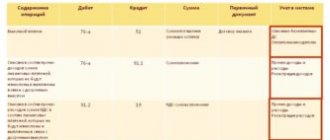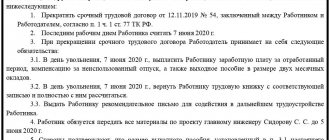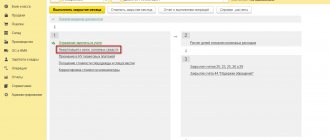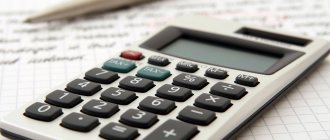Documenting
The transfer of property for leasing can be formalized by an acceptance certificate in any form or using the unified forms No. OS-1, No. OS-1a, No. OS-1b, approved by Resolution of the State Statistics Committee of Russia dated January 21, 2003 No. 7. Deciding which forms will be applied in the organization, fix it in the accounting policy.
This procedure follows from the provisions of parts 1 and 4 of Article 9 of the Law of December 6, 2011 No. 402-FZ, paragraph 4 of PBU 1/2008 and paragraph 1 of Article 655 of the Civil Code of the Russian Federation.
At the initiative of the lessor
The lessor also has the right to terminate the agreement early. The legislative framework is Law No. 164-FZ “On Financial Lease (Leasing)”, as well as Articles 310 and 450 of the Civil Code of the Russian Federation.
The main consequence of a unilateral refusal to fulfill obligations is the need to pay monetary compensation to the lessee. The initiator of the break is obliged to notify his counterparty in writing of his intention to terminate the agreement early.
According to the provisions of the Civil Code of the Russian Federation, the lessor may terminate the agreement in the following cases:
- Misuse of property by the recipient.
- Use of leased property in violation of the terms of the contract.
- Failure to meet payment deadlines.
- Ignoring maintenance activities if this item is specified in the contact.
- Termination of economic activity of the recipient.
When drawing up an agreement to terminate the leasing agreement, the obligations of the parties are considered modified or terminated, unless other circumstances were previously agreed upon. Thus, funds received during the period of validity of the agreement and before its expiration should be taken into account in income for profit tax purposes until the moment of termination of the document, which are prescribed in the Civil Code of the Russian Federation (Letter of the Ministry of Finance of Russia dated April 2, 2010 N 03-03-06/1 /226).
Accounting
Before the leased asset is placed on the balance sheet, the lessor must, in accordance with the general procedure, create expenses for its acquisition on account 08.
The initial cost is formed from the purchase price paid to the supplier of the fixed asset, the costs of delivering the object and bringing it into a condition suitable for use. This is reflected in accounting by the following entries:
Debit 08 Credit 60 (76) – the cost of property acquired for a fee for leasing is taken into account;
Debit 08 Credit 23 (26, 70, 76...) - reflects the costs associated with bringing the property to a state in which it can be transferred to the lessee for use.
Include the cost of paying state duty in the initial cost of the leased item. Do this if the responsibility for registering real estate is assigned to the lessor.
Determine the initial cost of the leased property based on:
- primary accounting documents (invoices, acceptance certificates, etc.);
- any other documents confirming the costs incurred (customs declarations, business travel orders, etc.).
For more information about this, see How to reflect the acquisition of fixed assets for a fee in accounting.
After the value has been formed, the leased asset must be reflected in accounting as a profitable investment in tangible assets in account 03. For the convenience of control over the movement of transaction objects, the lessor has the right to open corresponding sub-accounts to account 03:
- “Property intended for lease”;
- "Property transferred on lease."
Take into account the property intended for leasing in the amount of the cost of its acquisition:
Debit 03 subaccount “Property intended for leasing” Credit 08 – leased property is accepted for accounting as profitable investments in material assets.
The further procedure for accounting for leased property depends on where it is recorded:
- on the lessor's balance sheet;
- or on the balance sheet of the lessee.
Current legislation gives the parties the right to agree on whose balance sheet the leased asset will be accounted for (clause 50 of the Methodological Instructions approved by Order of the Ministry of Finance of Russia dated October 13, 2003 No. 91n).
At the initiative of the lessee
The lessee may act as the initiator of termination of the agreement in the event of one or more of the following reasons:
- The subject of the contract was not provided within the prescribed period.
- The owner has not fulfilled his obligations (repairs, maintenance, if specified in the contract).
- The property was damaged for reasons beyond the control of the recipient.
Today, the law does not provide clear templates for applications for early termination; accordingly, participants themselves must take care of a detailed description of all obligations and responsibilities in order to avoid conflict situations in the future.
After the property has been added to the recipient’s balance sheet, its value is reflected in debit 01 in the amount of lease payments, but excluding VAT. This tax is carried out db. sch. 19. and cr. sch. 76, subaccount “Rental (leasing) obligations”.
The leased asset is taken into account as part of fixed assets and depreciation is calculated in accordance with clause 17 of PBU 6/01.
In the event of early return of the leased asset to the owner, the lessee's transactions upon termination of the contract are as follows:
- The tenant writes off its residual value from his account (clause 29 of PBU 6/01).
- Expenses accompanying the return process (dismantling, insurance, transportation, etc.) are paid by the recipient. This write-off is reflected in account 91 and subaccount 2 “Other expenses”.
They are also taken into account for tax purposes as non-operating expenses (clause 20, clause 1, article 265 of the Tax Code of the Russian Federation).
Property on the lessor's balance sheet
Document the operation of transferring property for leasing with the following entries:
Debit 03 subaccount “Property transferred to leasing” Credit 03 subaccount “Property intended to be transferred to leasing” - property was transferred to leasing.
This accounting procedure follows from paragraph 3 of the instructions approved by Order of the Ministry of Finance of Russia dated February 17, 1997 No. 15 (this document can be used to the extent that does not contradict later regulatory legal acts on accounting (letter of the Ministry of Finance of Russia dated July 3, 2007 No. 07-05-06/180)), and from the Instructions for the Chart of Accounts (account 03).
An example of reflecting the transfer of property for leasing in accounting. The property is recorded on the lessor's balance sheet
One of the activities of Alpha LLC is leasing. In January, Alpha purchased equipment and leased it (without repurchase). The cost of purchasing leased property amounted to RUB 967,000. (including VAT – RUB 147,508).
In January, the following entries were made in the organization’s accounting:
Debit 08 Credit 60 – 819,492 rub. (967,000 rubles – 147,508 rubles) – the costs of purchasing equipment are reflected;
Debit 19 Credit 60 – 147,508 rub. – VAT on purchased equipment is taken into account;
Debit 60 Credit 51 – 967,000 rub. – the cost of the equipment has been paid to the supplier;
Debit 03 subaccount “Property intended for leasing” Credit 08 – RUB 819,492. – equipment intended for leasing has been accepted for accounting;
Debit 68 subaccount “Calculations for VAT” Credit 19 – 147,508 rub. – VAT is accepted for deduction on the cost of equipment;
Debit 03 subaccount “Property transferred for leasing” Credit 03 subaccount “Property intended for lease” – 819,492 rubles. – equipment is leased.
If leased property (usually worth more than 40,000 rubles) remains on the lessor’s balance sheet, charge depreciation on it.
This procedure follows from paragraph 21 of PBU 06/01, paragraph 50 of the Methodological Instructions, approved by Order of the Ministry of Finance of Russia dated October 13, 2003 No. 91n.
Depreciation must be calculated starting from the month following the month in which the property was accepted for accounting as a fixed asset (that is, its value was reflected by the lessor on account 03) (clause 21 of PBU 6/01, clause 61 of the Methodological Instructions , approved by order of the Ministry of Finance of Russia dated October 13, 2003 No. 91n).
For more information on the procedure for calculating depreciation by the lessor, see:
- How can a lessor reflect leasing payments in accounting under a contract without repurchase;
- How can a lessor reflect leasing payments under a buyout agreement in accounting.
VAT on advance payment upon return of the leased asset
The return to the lessor of the leased asset belonging to him is not recognized as a sale and, therefore, is not subject to VAT taxation (clause 1, article 39 of the Tax Code of the Russian Federation, clause 1, clause 1, article 146 of the Tax Code of the Russian Federation). Accordingly, the obligation to calculate VAT when returning the leased asset from the lessee to the lessor does not arise regardless of whose balance sheet the leased asset is recorded on (the lessor or the lessee).
When concluding a leasing agreement, the parties may provide for the payment of advance payments and, if it is transferred, the lessee has the right to deduct VAT from the amount of this advance payment (clause 12 of Article 171 of the Tax Code of the Russian Federation, clause 9 of Article 172 of the Tax Code of the Russian Federation). Upon receipt from the lessor of an invoice for the lease payment for the period of use of the object, the VAT on the advance previously accepted for deduction is subject to restoration (clause 3, clause 3, article 170 of the Tax Code of the Russian Federation).
For a situation where the lessee applied a tax deduction for VAT on the advance payment paid to the lessor, it is important to take into account that one of the mandatory conditions for the restoration of the amounts of VAT accepted for deduction when transferring the prepayment upon termination of the contract is the return of the corresponding amounts of advance payments (clause 3, clause 3, art. 170 of the Tax Code of the Russian Federation).
Thus, the basis for the restoration of VAT amounts previously accepted for deduction from the advance arises for the lessee only when the lessor returns to him the previously transferred advance.
In the situation under consideration, it is not the return of funds, but the offset of the advance. An advance paid towards lease payments ceases to be such, but becomes compensation for losses, i.e. the advance payment ceases to be an advance payment towards a VAT-taxable transaction.
Offsetting mutual claims can be classified as the return of an advance for the purposes of applying paragraphs. 3 p. 3 art. 170 of the Tax Code of the Russian Federation (letters of the Ministry of Finance of the Russian Federation dated 04/01/2014 N 03-07-RZ/14444, dated 06/22/2010 N 03-07-11/262).
In clause 3.1 of the Determination of the Constitutional Court of the Russian Federation dated November 8, 2018 N 2796-O, it is noted that those amounts of VAT that, following the results of the tax period, lose their advance nature at the end of the tax period are subject to restoration (see Letter of the Federal Tax Service of Russia dated December 29, 2018 N SA-4-7/ 26060).
Thus, if the lessee previously exercised the right to deduct VAT on the advance paid to the lessor, then at the time of offset of mutual claims he will have to restore the VAT in the appropriate part (the balance of the advance).
Get expert advice
according to your situation and get expert advice.
Ask a Question
Ask a Question
How can a lessee record the return of leased property in accounting?
If the repurchase of the property is not provided for in the agreement, then at the end of the agreement the lessee must return the leased asset (Clause 5, Article 15 of the Law of October 29, 1998 No. 164-FZ).
Documenting
The return of property to the lessor must be documented (for example, a transfer and acceptance certificate). This requirement follows from the provisions of Part 1 of Article 9 of the Law of December 6, 2011 No. 402-FZ, which states that all business transactions must be documented with primary documents.
Accounting
The reflection of the transaction for the return of leased property in the accounting of the lessee depends on whose balance sheet it is listed on:
— on the balance sheet of the lessor; - on the balance sheet of the lessee.
This follows from section III of the instructions approved by order of the Ministry of Finance of Russia dated February 17, 1997 No. 15. This document can be used to the extent that does not contradict later regulatory legal acts on accounting (letter of the Ministry of Finance of Russia dated July 3, 2007 No. 07- 05-06/180).
Property on the lessor's balance sheet
In accounting, leased property that remains on the lessor’s balance sheet is taken into account on the balance sheet in account 001 “Leased fixed assets.”
Complete the operation to return the leased property using the following entry:
Loan 001 – property received under lease is written off off-balance sheet in connection with its return to the lessor.
This is stated in paragraph 1 of paragraph 10 of the instructions approved by order of the Ministry of Finance of Russia dated February 17, 1997 No. 15.
An example of reflecting the return of the leased asset in the lessee's accounting. The property is recorded on the lessor's balance sheet
Due to the expiration of the contract, OJSC “Production Company Master” returns the leased equipment to the lessor.
The leased asset was received in January 2010 for a period of 5 years (60 months). The cost of the property is 967,000 rubles. (including VAT – RUB 147,508). The total amount of leasing payments for the entire leasing period is RUB 1,300,000. (including VAT - 198,305 rubles) The lessee made payments according to the schedule monthly in equal installments of 21,667 rubles. (RUB 1,300,000: 60 months), including VAT in the amount of RUB 3,305. (RUB 198,305: 60 months).
According to the terms of the agreement, leasing equipment is on the balance sheet of the lessor. In January 2010, the lessee made the following entries in accounting:
Debit 001 – RUB 819,492. (967,000 rubles – 147,508 rubles) – reflects the cost of the leased asset specified in the agreement in the amount of costs for the acquisition of property by the lessor; Debit 20 Credit 60 – 18,362 rub. (RUB 21,667 – RUB 3,305) – lease payment accrued for January; Debit 19 Credit 60 – 3305 rub. – input VAT on leasing services for January is taken into account; Debit 68 subaccount “Calculations for VAT” Credit 19 – 3305 rub. – submitted for deduction of input VAT on leasing services for January; Debit 60 Credit 51 – 21,667 rub. – the lease payment for January is listed.
Monthly from February 2010 to December 2014:
Debit 20 Credit 60 – 18,362 rub. (RUB 21,667 – RUB 3,305) – lease payment accrued for the corresponding month; Debit 19 Credit 60 – 3305 rub. – input VAT on leasing services for the corresponding month is taken into account; Debit 68 subaccount “Calculations for VAT” Credit 19 – 3305 rub. – submitted for deduction of input VAT on leasing services; Debit 60 Credit 51 – 21,667 rub. – the leasing payment for the month is listed.
In December 2014:
Loan 001 – RUB 819,492. – property received under a leasing agreement is written off.
Property on the balance sheet of the lessee
The leased property, which according to the agreement is transferred to the balance of the lessee, is taken into account as a fixed asset.
During the term of the contract, the lessee had to charge depreciation on the leased asset recorded on its balance sheet.
The procedure for recording the operation of returning leased property to the lessor's balance sheet contains paragraph 10 of the instructions approved by Order No. 15 of the Ministry of Finance of Russia dated February 17, 1997. However, it can be used only to the extent that does not contradict the current Chart of Accounts and Instructions for its application.
When returning the leased asset, the lessee writes off its residual value from accounting (clause 29 of PBU 6/01). At the same time, the lessee must reflect the termination of the remaining obligations to the lessor accrued at the time of receipt of the property. During the term of the contract, these obligations were repaid at the time of depreciation.
To account for the disposal of the leased asset, it is permissible to open a separate sub-account “Disposal of fixed assets received under lease” to account 01. This procedure follows from the Instructions for the chart of accounts (account 01).
Starting from the month following the month of return of the leased asset, stop accruing depreciation (clause 22 of PBU 6/01).
Situation: how to reflect the return of property to the lessor in accounting? According to the agreement, the leased item was listed on the balance sheet of the lessee
Reflect the return of leased property without using financial statements.
This is due to the fact that when the leased asset is returned, no sale occurs. Therefore, income and expenses associated with the disposal of this property are not formed in the accounting of the lessee (clause 2 of PBU 9/99, clause 2 of PBU 10/99).
However, this procedure is not directly enshrined in accounting regulations. In addition, according to paragraph 10 of the instructions approved by order of the Ministry of Finance of Russia dated February 17, 1997 No. 15, to reflect the return of the leased asset, canceled account 47 “Sales and other disposal of fixed assets” should be used. Therefore, in practice, organizations use various options for accounting for the return of the leased asset to the lessor’s balance sheet. Including the general procedure for disposal of fixed assets. But in private explanations, specialists from the Russian Ministry of Finance indicate that it is not correct to reflect the return of leased property using financial performance accounts.
The operation to return leased property to the lessor’s balance sheet can be reflected as follows:
Debit 02 subaccount “Depreciation on property received under lease” Credit 01 subaccount “Fixed assets received under lease” – depreciation accrued during the period of operation of the leased asset is repaid;
Debit 76 subaccount “Cost of the leased asset” Credit 01 subaccount “Fixed assets received on lease” - property received on lease is deregistered (at residual value).
The described procedure corresponds to the provisions of the current Chart of Accounts (Instructions for the Chart of Accounts - accounts 01, 02).
An example of reflecting in the lessee's accounting the return of the leased asset to the lessor. The property is recorded on the lessee's balance sheet
In January 2009, Proizvodstvennaya OJSC received production equipment under a leasing agreement without the right to buy for a period of 5 years (60 months). Under the terms of the agreement, the equipment is listed on the lessee’s balance sheet and must be returned to the lessor in January 2014. The cost of the property is 967,000 rubles. (including VAT – RUB 147,508). The total amount of leasing payments under the agreement is RUB 1,300,000. (including VAT – RUB 198,305). The monthly leasing payment amount according to the schedule is RUB 21,667. (including VAT - 3305 rubles). The first payment is due in January 2009.
The accountant of Master OJSC determined the useful life based on the contract term - 5 years (60 months). In accounting, an organization calculates depreciation using the straight-line method. In January, the following entries were made in the lessee’s accounting:
Debit 08 subaccount “Property received under lease” Credit 76 subaccount “Cost of the leased item” – 819,492 rubles. (967,000 rubles – 147,508 rubles) – the cost of the property received is reflected on the balance sheet; Debit 01 sub-account “Fixed assets received on lease” Credit 08 sub-account “Property received on lease” – 819,492 rubles. – equipment leased was put into operation.
Monthly starting from January 2009 until the end of payments according to the leasing schedule in December 2013:
Debit 20 Credit 60 subaccount “Payments for the use of the leased asset” – 18,362 rubles. (RUB 21,667 – RUB 3,305) – lease payment accrued for the current month; Debit 19 Credit 60 subaccount “Payments for the use of the leased asset” – 3305 rubles. – input VAT on the lease payment amount is taken into account; Debit 68 subaccount “Calculations for VAT” Credit 19 – 3305 rub. – submitted for deduction of input VAT on leasing services; Debit 60 subaccount “Payments for the use of the leased asset” Credit 51 – 21,667 rubles. – the lease payment for the current month has been paid.
Monthly from February until the month of property return (January 2014):
Debit 76 subaccount “Cost of the leased asset” Credit 02 subaccount “Depreciation of property received under lease” – 13,658 rubles. (RUB 819,492: 60 months) – depreciation was accrued for the current month to reduce the amount of liabilities for the cost of property received for temporary use.
When the property was returned (in January 2014), the following entries were made in accounting:
Debit 76 subaccount “Cost of the leased asset” Credit 02 subaccount “Depreciation of property received under lease” – 13,658 rubles. – depreciation was accrued for the last month in which the property was recorded on the lessee’s balance sheet. Debit 02 subaccount “Depreciation on property received under lease” Credit 01 subaccount “Disposal of fixed assets” – 819,492 rubles. (RUB 13,658 × 60 months) – reflects depreciation accrued over the period of operation of the leased asset.
Situation: how to reflect in the lessee's accounting the transfer of obligations under the contract to another lessee? The leased item is on the balance sheet of the lessee. There is no debt to the lessor for lease payments
The transfer of rights under a leasing agreement is reflected in accounting in the same manner as the transfer of debt, but taking into account the specifics of the leasing agreement. (see also transfer of debt between legal entities - postings)
A leasing agreement (financial lease) is a separate type of lease agreement (Article 625 of the Civil Code of the Russian Federation). The tenant has the right, with the consent of the lessor, to transfer his rights and obligations under the lease agreement to another person, that is, to transfer the property for lease (Clause 2 of Article 615 of the Civil Code of the Russian Federation). When rehiring, the tenant is replaced in the obligations arising from the lease agreement. Therefore, rehire must be carried out in compliance with the requirements for the assignment of the right of claim and transfer of debt (subclause 1, 2 of Article 391, clause 1 of Article 389 of the Civil Code of the Russian Federation, letter of the Ministry of Finance of Russia dated July 14, 2009 No. 03-03-06/1 /463).
In the accounting of the lessee, reflect the transfer of the leased asset under the debt transfer agreement with the following entries:
Debit 76 subaccount “Cost of the leased asset” Credit 76 subaccount “Calculations for re-leasing” - reflects the amount of obligations under the leasing agreement transferred to the new lessee;
Debit 02 subaccount “Depreciation of property received under lease” Credit 01 subaccount “Fixed assets received under lease” – the amount of accumulated depreciation of the leased asset is written off;
Debit 76 subaccount “Calculations for re-leasing” Credit 01 subaccount “Fixed assets received on lease” - the residual value of the leased asset is written off.
The described procedure corresponds to the provisions of the current Chart of Accounts (Instructions for the Chart of Accounts - accounts 01, 02, 76).
Expenses associated with the return of leased property
The leasing agreement may include a condition on the provision by the lessor of additional services (clause 2 of article 7 of the Law of October 29, 1998 No. 164-FZ). Expenses associated with the return of leased property, which under the contract or law must be paid by the lessee (for example, transportation), are reflected in accounting entries:
Debit 20 (23, 25, 26, 29, 44, 91-2...) Credit 76 (60, 70, 69...) - reflects expenses associated with the return of the leased asset (depending on the nature of the use of the returned property - in the main activity, for management needs, etc.).
This follows from paragraphs 5, 7 and 11 of PBU 10/99.
Income tax
Costs associated with the return of leased property (for example, delivery costs) should be taken into account when calculating income tax if the responsibility for their implementation is assigned to the lessee by agreement or law (clause 1 of Article 252 of the Tax Code of the Russian Federation).
Take such costs into account when calculating income tax as part of other production expenses. For example:
— expenses for the maintenance of official transport (if delivered on our own) on the basis of subparagraph 11 of paragraph 1 of Article 264 of the Tax Code of the Russian Federation;
- costs of paying for the services of third-party providers (when delivering with the assistance of a third-party carrier) on the basis of subparagraph 49 of paragraph 1 of Article 264 of the Tax Code of the Russian Federation.
Costs associated with the return of property leased for service industries and farms should be taken into account separately (Article 275.1 of the Tax Code of the Russian Federation). Do not take into account the costs associated with the return of non-production objects received on lease when calculating income tax. This is due to the fact that all expenses that reduce the tax base must be economically justified (clause 1 of Article 252 of the Tax Code of the Russian Federation). That is, they are related to the production activities of the organization.
When using the accrual method, take into account the costs associated with the return of the leased property in the period to which they relate (for example, the costs of delivery by a third-party carrier - after receiving from him a document confirming the provision of the service) (paragraph 1, clause 1, article 272 Tax Code of the Russian Federation). When using the cash method, expenses associated with the return of property to the lessor are recognized after they have been paid (clause 3 of Article 273 of the Tax Code of the Russian Federation).
The lessee does not bear expenses in the form of the value of the (residual) property transferred to the lessor at the end of the leasing agreement (regardless of whose balance sheet the leased asset was recorded on). This is explained by the fact that when the leased property is returned, there is no sale. Since throughout the entire period of validity of the leasing agreement, the lessor remains the owner of the property (Clause 1, Article 11 of the Law of October 29, 1998 No. 164-FZ).
Property on the lessor's balance sheet
If the property was accounted for on the lessor’s balance sheet, then no depreciation was accrued on it during the term of the agreement. When calculating income tax, only the amount of leasing payments according to the schedule was taken into account. Accordingly, the mere fact of returning the property to the lessor does not affect the procedure for accounting for costs. The moment of termination of accounting for expenses in the form of leasing payments is determined by the schedule for the provision of leasing services.
This follows from subparagraph 10 of paragraph 1 of Article 264 and subparagraph 3 of paragraph 7 of Article 272 of the Tax Code of the Russian Federation.
Property on the balance sheet of the lessee
If the property was accounted for on the balance sheet of the lessee, then during the term of the contract, leasing payments were taken into account minus the amounts of accrued depreciation (clause 1 of Article 256, clause 10 of Article 258 of the Tax Code of the Russian Federation). When returning property to the lessor's balance sheet, stop accruing depreciation from the 1st day of the month following the month of such transfer. This follows from paragraph 5 of Article 259.1, paragraph 10 of Article 259.2 of the Tax Code of the Russian Federation.
If by the month of return of the property its original cost has already been fully depreciated, then the leasing payments provided for in the schedule for the month of return should be taken into account in expenses in full. This approach is set out in the letter of the Ministry of Finance of Russia dated March 29, 2006 No. 03-03-04/1/305.
If, according to the terms of the contract, the date of return of the property falls in the month following the last lease payment, then please note that costs cannot be re-included as expenses (clauses 1 and 5 of Article 252 of the Tax Code of the Russian Federation). In addition, according to subparagraph 10 of paragraph 1 of Article 264 of the Tax Code of the Russian Federation, the amount of depreciation cannot exceed the amount of the lease payment. Therefore, do not take into account depreciation accrued after the accrual of leasing payments has ceased according to the schedule when calculating income tax.
An example of how to reflect the return of property received under lease in accounting and taxation of the lessee. The property is recorded on the lessee's balance sheet
In January 2009, Proizvodstvennaya OJSC received production equipment under a leasing agreement without the right to buy for a period of 5 years (60 months). Under the terms of the agreement, the equipment is listed on the lessee’s balance sheet and must be returned to the lessor in January 2014. The cost of the property is 967,000 rubles. (including VAT – RUB 147,508). The total amount of leasing payments under the agreement is RUB 1,300,000. (including VAT – RUB 198,305). The monthly leasing payment amount according to the schedule is RUB 21,667. (including VAT - 3305 rubles). According to the schedule, leasing payments begin to be paid from the month of receipt of the property (January).
The useful life according to the classification of fixed assets subject to application for tax purposes is 6 years (72 months). In accounting and tax accounting, an organization calculates depreciation using the straight-line method.
The monthly depreciation rate was: 1: 72 months. × 100% = 1.3889%. The monthly depreciation amount is equal to: (967,000 rubles – 147,508 rubles) × 1.3889% = 11,382 rubles.
The following entries were made in the organization's accounting records.
In January: Debit 08 subaccount “Property received on lease” Credit 76 subaccount “Cost of the leased item” - 819,492 rubles. (967,000 rubles – 147,508 rubles) – reflects the cost of the equipment received on the balance sheet; Debit 01 sub-account “Fixed assets received on lease” Credit 08 sub-account “Property received on lease” – 819,492 rubles. – leasing equipment was put into operation; Debit 20 Credit 60 – 18,362 rub. (RUB 21,667 – RUB 3,305) – lease payment accrued for January; Debit 19 Credit 60 – 3305 rub. – input VAT has been taken into account on the amount of the leasing payment for January; Debit 68 subaccount “Calculations for VAT” Credit 19 – 3305 rub. – submitted for deduction of input VAT on the leasing payment for January; Debit 60 Credit 51 – 21,667 rub. – the lease payment for January is listed.
The organization uses the accrual method and pays taxes monthly. When calculating income tax for January, the accountant took into account the amount of the lease payment in expenses - 18,362 rubles. Since accounting in January also recognized an expense in the amount of 18,362 rubles, there are no differences according to PBU 18/02.
Monthly starting from February 2009 until the end of payments according to the leasing schedule in December 2013:
Debit 76 subaccount “Cost of the leased asset” Credit 02 subaccount “Depreciation of property received under lease” – 11,382 rubles. – depreciation has been calculated on leased equipment for the current month; Debit 20 Credit 60 – 18,362 rub. – the lease payment for the current month has been accrued; Debit 19 Credit 60 – 3305 rub. rub. – input VAT on the amount of the lease payment for the current month is taken into account; Debit 68 subaccount “Calculations for VAT” Credit 19 – 3305 rub. – submitted for deduction of input VAT on the lease payment for the current month; Debit 60 Credit 51 – 21,667 rub. – the lease payment for the current month is listed.
In tax accounting, monthly from February 2009 until December 2013, the accountant recognized as expenses the amount of leasing payments minus accrued depreciation - 6980 rubles. (18,362 rubles – 11,382 rubles) and the amount of accrued depreciation – 11,382 rubles.
Thus, the total amount of expenses recognized in tax accounting for 5 years is 1,101,720 rubles. ((RUB 6,980 + RUB 11,382) × 59 months + RUB 18,362), is equal to the amount of costs reflected in accounting for the same period (RUB 18,362 × 60 months). Therefore, there is no difference according to PBU 18/02.
When the property was returned in January 2014, the following entries were made in accounting:
Debit 76 subaccount “Cost of the leased asset” Credit 02 subaccount “Depreciation of property received under lease” – 11,382 rubles. – depreciation was accrued for the last month in which the property was recorded on the lessee’s balance sheet; Debit 02 subaccount “Depreciation on property received under lease” Credit 01 subaccount “Disposal of fixed assets” – 682,290 rubles. (RUB 11,382 × 60 months) – depreciation accrued over the period of operation of the leased asset is reflected; Debit 76 subaccount “Cost of the leased asset” Credit 01 subaccount “Fixed assets received on lease” – 137,202 rubles. (RUB 819,492 – RUB 682,290) – the residual value of the leased property is written off.
In January 2014, expenses related to the leasing agreement were absent in both accounting and tax accounting.
VAT
The operation of returning leased property to the lessor is not subject to VAT. This is due to the fact that the lessee does not have ownership rights to this property; accordingly, the sale of property - the object of taxation - does not arise (subclause 1, clause 1, article 146, clause 1, article 39 of the Tax Code of the Russian Federation, clause 1, art. 11 of the Law of October 29, 1998 No. 164-FZ).
Amounts of input VAT, for example, on the cost of delivery services by third-party carriers, can be deducted if you have an invoice and relevant primary documents (in addition, other conditions necessary for applying the deduction must be met) (subclause 1, clause 2, art. 171, clause 1 of article 172 of the Tax Code of the Russian Federation).
simplified tax system
The tax base of simplified organizations that pay a single tax on income, expenses associated with the return of property received under lease, are not reduced (clause 1 of Article 346.14 of the Tax Code of the Russian Federation).
Costs associated with the return of leased property should be taken into account when calculating the single tax only if they are provided for in Article 346.16 of the Tax Code of the Russian Federation and the obligation to bear them is assigned to the lessee by agreement or law (clause 1 of Article 252 of the Tax Code of the Russian Federation). This applies, for example, to the costs of delivering leased property back to the lessor without the involvement of third-party carriers. When calculating the single tax, such costs can be taken into account under the following expense items:
- expenses for the maintenance of official transport - on the basis of subparagraph 12 of paragraph 1 of Article 346.16 of the Tax Code of the Russian Federation;
- input VAT on the cost of fuel and lubricants - on the basis of subclause 8 of clause 1 of Article 346.16 of the Tax Code of the Russian Federation.
Do not take into account the costs associated with the return of non-production objects when calculating the single tax. This is due to the fact that all expenses that reduce the tax base must be economically justified (clause 2 of article 346.16 and clause 1 of article 252 of the Tax Code of the Russian Federation). That is, they are related to the production activities of the organization.
In this case, a prerequisite for recognizing expenses is their payment (clause 2 of Article 346.17 of the Tax Code of the Russian Federation).
The lessee has no expenses in the form of the value of the property transferred back to the lessor at the end of the leasing agreement. This is explained by the fact that the returned property remains the property of the lessor (Clause 1, Article 11 of the Law of October 29, 1998 No. 164-FZ).
UTII
The object of UTII taxation is imputed income (clause 1 of Article 346.29 of the Tax Code of the Russian Federation). Therefore, the operation to return property received under lease does not affect the calculation of the single tax. However, if the leased asset was used in activities subject to UTII, its disposal may reduce the number of physical indicators taken into account when calculating the amount of imputed income.
Combining UTII with other regimes
The lessor may incur costs associated with the return of leased property (for example, delivery costs). If leased property is used simultaneously in activities subject to UTII and in activities for which taxes are paid according to the general taxation system, then such costs must be distributed (clause 9 of Article 274 of the Tax Code of the Russian Federation).
Distribute the amount of input VAT (allocated in the invoice) from the cost of third-party services according to the methodology established in paragraphs 4 and 4.1 of Article 170 of the Tax Code of the Russian Federation.
To the received share of expenses (for example, for transportation) for the activities of an organization subject to UTII, add the amount of VAT that cannot be deducted (subclause 3, clause 2, article 170 of the Tax Code of the Russian Federation).
An example of the lessee's distribution of expenses associated with the return of leased property. The organization combines the general taxation system and UTII
LLC "Trading Company Hermes" sells goods wholesale and retail. For wholesale transactions, the organization applies a general taxation system. Retail trade has been transferred to UTII.
Hermes pays income tax monthly. The accounting policy of the organization states that expenses related to several types of activities are distributed in proportion to the share of income received from different types of activities for each month of the reporting (tax) period.
The organization entered into a leasing agreement with CJSC Alfa. The subject of leasing is a car. The vehicle is designed to transport goods sold wholesale and retail. The term of the leasing agreement is 5 years (60 months). At the end of the leasing agreement (in May), Hermes returns the car to Alfa. The amount of costs for delivery of the car (with the involvement of a third-party carrier), which Hermes bears under the leasing agreement, is 59,000 rubles. (including VAT – 9000 rubles).
The amount of income received by Hermes in May was: - from wholesale trade (excluding VAT) - 21,000,000 rubles; — for retail trade – 9,000,000 rubles.
In order to correctly distribute the costs associated with the return of leased property between the two types of activities, the Hermes accountant compared the income from wholesale trade with the total amount of income.
The share of income from wholesale trade in total income for May is: RUB 21,000,000. : (RUB 21,000,000 + RUB 9,000,000) = 0.7. The share of expenses associated with the return of a leased car, which relates to activities on the general taxation system, is equal to: (59,000 rubles – 9,000 rubles) × 0.7 = 35,000 rubles. The accountant took this amount into account when calculating income tax for January–May.
The share of expenses associated with the return of the leased car, which relates to the activities of the organization subject to UTII, amounted to: 50,000 rubles. – 35,000 rub. = 15,000 rub.
The amount of VAT that can be deducted from the cost of fuel and lubricants used during delivery can be determined by an accountant based on the results of the second quarter.
Property tax
The procedure for paying property tax on a leased asset depends on whose balance sheet it is recorded on. For more information about this, see Who and in what order must pay property tax when leasing.







